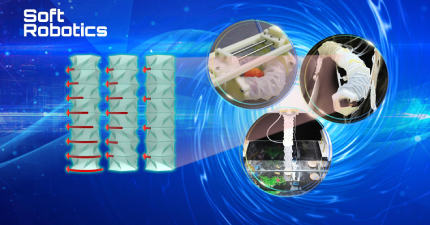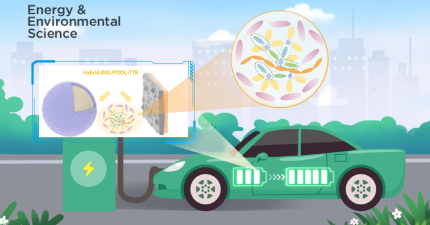DEPARTMENTS |JOIN US|中文
Department of Mechanics and Aerospace EngineeringDepartment of Mechanical and Energy EngineeringDepartment of Materials Science and EngineeringDepartment of Electrical and Electronic EngineeringDepartment of Computer Science and EngineeringDepartment of Ocean Science and EngineeringDepartment of Biomedical EngineeringSchool of Environmental Science and EngineeringSchool of Micorelectronics (National Exemplary Institue)School of System Design and Intelligent Manufacturing
Education
MIT professor Chen Gangnan University lecture hall shared the educational environment and teaching innovation of MIT
Nov 14, 2018
Chen Gang is an academician of the National Academy of Engineering. He is currently Professor of the Massachusetts Institute of Technology, Professor Carl Richard Soderberg, and Director of the Solid State Solar Thermal Energy Conversion Center (S3TEC Center).
Measuring three aspects of top universities
In the lecture, Chen Gang first proposed the conditions necessary for top universities, that is, must have excellent students, teachers and environment, and especially emphasized the excellent environment. In addition to the material environment, more important is the soft environment, including the relationship between teachers and students, the organization of the school, and mutual exchanges. He believes that top universities need to be measured in the following ways: First, create new knowledge from research. Second, education should be taught to become a leading talent in society. The third is to promote the industrial transformation of scientific research results through the research of teachers and students and the mechanism of the school, and contribute to society.
According to Chen Gang, the motto of MIT is “Mens et Manus”, which is used in both hands and brains, and is used throughout the teaching activities. Generally, there are imbalances between men and women in science and engineering colleges, but the number of MIT girls is about 45% of the total. MIT will open a Women's Technology Program for high school girls in the summer, giving high school girls the opportunity to get in touch with technology experiments and courses to make them interested in technology and choose MIT.
Three classes of professors "teaming"
Chen Gang pointed out that MIT is not only known for its cutting-edge research, but also for its educational innovation. For professors who teach at MIT, the school requires professors to have a passion for excellence in teaching and research; the second is to encourage professors to learn and cooperate with each other; and the third is to pursue excellence in teaching. Look forward to and fully respect the autonomy of professor teaching.
For example, in the case of large class teaching, a course of 150-180 people will be taught by a team of three professors. One of the professors gave a lecture on the stage, and two other professors listened to the back row in order to face problems and correct them on the spot. At the same time, the two professors are divided into two small classes to tutor students. Therefore, the professor's preparation pressure is very large. In order to prepare for the class in advance, the three professors and teaching assistants will have one hour of teaching discussion every week. Since the teaching materials for each assignment are taught by the professor, the professor will discuss every question and every assignment of the students. Even before the exam, the three professors must first test the questions to ensure accuracy.
Chen Gang also illustrated MIT's teaching innovation by listing innovative courses offered by MIT.
In terms of curriculum innovation, taking the degree of mechanical engineering as an example, the mechanical department has a Bachelor of Science in Mechanical Engineering and a Bachelor of Science in Engineering as Recommend. Because the latter allows students to have more elective mobility, students can choose six elective courses and their majors according to their interests. Therefore, the number of students in the major is increasing year by year, among which the number of students who choose product design and robot engineering is Most prosperous.
MIT adopts a 1+3 training model, and first-year students are not professional. Taking the mechanical department as an example, in order to attract first-year students to understand the mechanical department, the mechanical department opened a toy design course (Toy Product Design). The content of the course is to design children's toys. This requires students and children to communicate, understand the needs of children, design toys that satisfy children, and show products at the end of the semester. Due to the lively content of the course, it is very popular among students, and the number of students selected is far more than the number of students in the curriculum design. The professor will also interview the selected students, mainly to examine the students' preference for the course, rather than the students' knowledge and experience in this area, in order to screen out the students who are really interested in the applicants.
In the design of the curriculum, MIT has also consistently implemented the motto of “hands and brains”. For example, Hands on Micro/Nanoengineering, in addition to a dedicated laboratory, also provides a place for students to experiment. The professor simplifies the experiments in his own research into experiments that can teach students, so students can participate in the experiment and gain a deeper understanding of the course. Many experiments at MIT have been extracted from the research in the professors, and students have benefited a lot.
Innovative curriculum design to cultivate students' innovative ability
For innovative courses, MIT will teach through competition. For example, the Robotic Design and Manufacturing course started in 1979. Students design and produce robots and compete for the first place through competitions. In the end, the competition was held in the MIT's Athlete Center. The competition lasted for one night. Not only did many teachers and students go to watch, but it also attracted the attention of the surrounding citizens. In addition to domestic competitions, MIT will also hold global technology competitions, such as the International (United States) FIRST Robotics Competition, which is open to students from all over the world, from primary school students to college students, all participating teams. It is both an ally and an opponent. There is a fierce confrontation between the teams and cooperation with each other. This experience of competition and cooperation is cultivating and cultivating the necessary skills for students to enter the society in the future.
Chen Gang also mentioned that the Product Engineering Process is much more concerned. At the beginning of the school, the professor will design a theme for the course and let the students team up to complete the task. Generally, a team of 20 students starts to divide into 2 groups and conduct market research to see which products have market value. On this basis, the two groups analyze and discuss and reach an agreement. Finally, the two groups of students spent a lot of time experimenting and creating, working together to make the product, and in the MIT's largest auditorium, faced more than a thousand live audiences and tens of thousands of online users to display products, while on-site and Online Q & A. The exhibition session is also very exciting. Each team has a unique band performance before the admission. Each team conducts product demonstrations on site and conducts on-the-spot questions for online and offline audiences. Every aspect of the team gives people a deep understanding of MIT students. Innovative spirit and teamwork skills.
Chen Gang also listed a number of unique courses. For example, Engineering System Development teaches students in the form of a company. The professor will appoint a student to be the CEO of this course, and more than 20 students will form a company. Students apply for funding from Lincoln Lab, and the student team works together to make the idea into a product.
MIT is very focused on transforming scientific research results and giving back to the society. Active communication and cooperation between departments and departments promotes the transformation of results. For example, professors from business schools and engineering schools will gather together to brainstorm and discuss how to turn technology and creativity into products and promote them to society. Another example is the D-lab course, which allows undergraduates to go to poor areas, use local resources for product design, develop technology, and design products that can help local people solve problems and improve their quality of life. Chen Gang also showed through the video the students who participated in the activity designed artificial limbs for people in poverty-stricken areas. They continued to improve the technology, updated the product materials, tried to reduce the cost of prosthetics, and let the price drop from tens of thousands of dollars. Below one hundred dollars, people in poor areas will eventually benefit.
MIT also set up a free online course. Usually when the professor is on stage, two staff members will record during the same period. After the class, they will be edited by the late employees and the content will be strictly controlled and screened. Although it requires a lot of manpower, material resources and financial resources, it allows more scholars to access more courses online.
Measuring three aspects of top universities
In the lecture, Chen Gang first proposed the conditions necessary for top universities, that is, must have excellent students, teachers and environment, and especially emphasized the excellent environment. In addition to the material environment, more important is the soft environment, including the relationship between teachers and students, the organization of the school, and mutual exchanges. He believes that top universities need to be measured in the following ways: First, create new knowledge from research. Second, education should be taught to become a leading talent in society. The third is to promote the industrial transformation of scientific research results through the research of teachers and students and the mechanism of the school, and contribute to society.
According to Chen Gang, the motto of MIT is “Mens et Manus”, which is used in both hands and brains, and is used throughout the teaching activities. Generally, there are imbalances between men and women in science and engineering colleges, but the number of MIT girls is about 45% of the total. MIT will open a Women's Technology Program for high school girls in the summer, giving high school girls the opportunity to get in touch with technology experiments and courses to make them interested in technology and choose MIT.
Three classes of professors "teaming"
Chen Gang pointed out that MIT is not only known for its cutting-edge research, but also for its educational innovation. For professors who teach at MIT, the school requires professors to have a passion for excellence in teaching and research; the second is to encourage professors to learn and cooperate with each other; and the third is to pursue excellence in teaching. Look forward to and fully respect the autonomy of professor teaching.
For example, in the case of large class teaching, a course of 150-180 people will be taught by a team of three professors. One of the professors gave a lecture on the stage, and two other professors listened to the back row in order to face problems and correct them on the spot. At the same time, the two professors are divided into two small classes to tutor students. Therefore, the professor's preparation pressure is very large. In order to prepare for the class in advance, the three professors and teaching assistants will have one hour of teaching discussion every week. Since the teaching materials for each assignment are taught by the professor, the professor will discuss every question and every assignment of the students. Even before the exam, the three professors must first test the questions to ensure accuracy.
Chen Gang also illustrated MIT's teaching innovation by listing innovative courses offered by MIT.
In terms of curriculum innovation, taking the degree of mechanical engineering as an example, the mechanical department has a Bachelor of Science in Mechanical Engineering and a Bachelor of Science in Engineering as Recommend. Because the latter allows students to have more elective mobility, students can choose six elective courses and their majors according to their interests. Therefore, the number of students in the major is increasing year by year, among which the number of students who choose product design and robot engineering is Most prosperous.
MIT adopts a 1+3 training model, and first-year students are not professional. Taking the mechanical department as an example, in order to attract first-year students to understand the mechanical department, the mechanical department opened a toy design course (Toy Product Design). The content of the course is to design children's toys. This requires students and children to communicate, understand the needs of children, design toys that satisfy children, and show products at the end of the semester. Due to the lively content of the course, it is very popular among students, and the number of students selected is far more than the number of students in the curriculum design. The professor will also interview the selected students, mainly to examine the students' preference for the course, rather than the students' knowledge and experience in this area, in order to screen out the students who are really interested in the applicants.
In the design of the curriculum, MIT has also consistently implemented the motto of “hands and brains”. For example, Hands on Micro/Nanoengineering, in addition to a dedicated laboratory, also provides a place for students to experiment. The professor simplifies the experiments in his own research into experiments that can teach students, so students can participate in the experiment and gain a deeper understanding of the course. Many experiments at MIT have been extracted from the research in the professors, and students have benefited a lot.
Innovative curriculum design to cultivate students' innovative ability
For innovative courses, MIT will teach through competition. For example, the Robotic Design and Manufacturing course started in 1979. Students design and produce robots and compete for the first place through competitions. In the end, the competition was held in the MIT's Athlete Center. The competition lasted for one night. Not only did many teachers and students go to watch, but it also attracted the attention of the surrounding citizens. In addition to domestic competitions, MIT will also hold global technology competitions, such as the International (United States) FIRST Robotics Competition, which is open to students from all over the world, from primary school students to college students, all participating teams. It is both an ally and an opponent. There is a fierce confrontation between the teams and cooperation with each other. This experience of competition and cooperation is cultivating and cultivating the necessary skills for students to enter the society in the future.
Chen Gang also mentioned that the Product Engineering Process is much more concerned. At the beginning of the school, the professor will design a theme for the course and let the students team up to complete the task. Generally, a team of 20 students starts to divide into 2 groups and conduct market research to see which products have market value. On this basis, the two groups analyze and discuss and reach an agreement. Finally, the two groups of students spent a lot of time experimenting and creating, working together to make the product, and in the MIT's largest auditorium, faced more than a thousand live audiences and tens of thousands of online users to display products, while on-site and Online Q & A. The exhibition session is also very exciting. Each team has a unique band performance before the admission. Each team conducts product demonstrations on site and conducts on-the-spot questions for online and offline audiences. Every aspect of the team gives people a deep understanding of MIT students. Innovative spirit and teamwork skills.
Chen Gang also listed a number of unique courses. For example, Engineering System Development teaches students in the form of a company. The professor will appoint a student to be the CEO of this course, and more than 20 students will form a company. Students apply for funding from Lincoln Lab, and the student team works together to make the idea into a product.
MIT is very focused on transforming scientific research results and giving back to the society. Active communication and cooperation between departments and departments promotes the transformation of results. For example, professors from business schools and engineering schools will gather together to brainstorm and discuss how to turn technology and creativity into products and promote them to society. Another example is the D-lab course, which allows undergraduates to go to poor areas, use local resources for product design, develop technology, and design products that can help local people solve problems and improve their quality of life. Chen Gang also showed through the video the students who participated in the activity designed artificial limbs for people in poverty-stricken areas. They continued to improve the technology, updated the product materials, tried to reduce the cost of prosthetics, and let the price drop from tens of thousands of dollars. Below one hundred dollars, people in poor areas will eventually benefit.
MIT also set up a free online course. Usually when the professor is on stage, two staff members will record during the same period. After the class, they will be edited by the late employees and the content will be strictly controlled and screened. Although it requires a lot of manpower, material resources and financial resources, it allows more scholars to access more courses online.
Latest News
Related News












